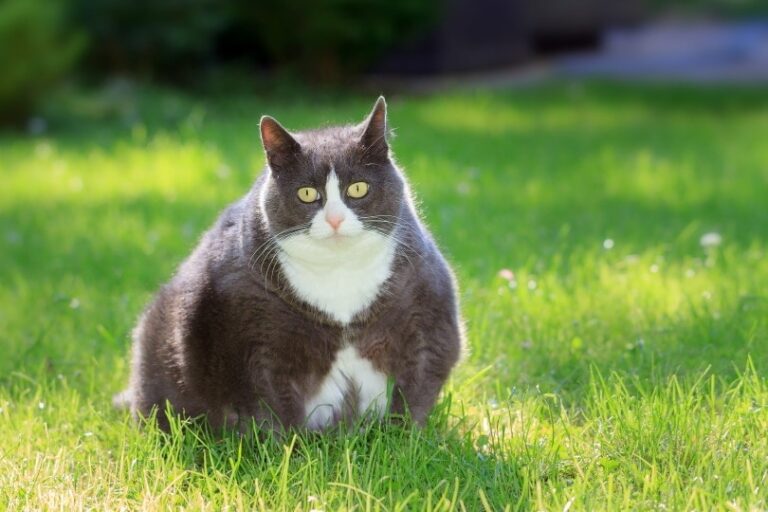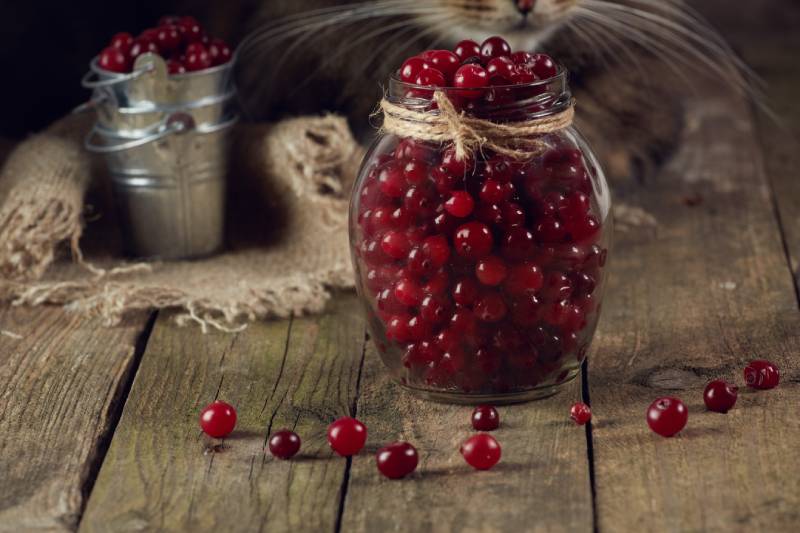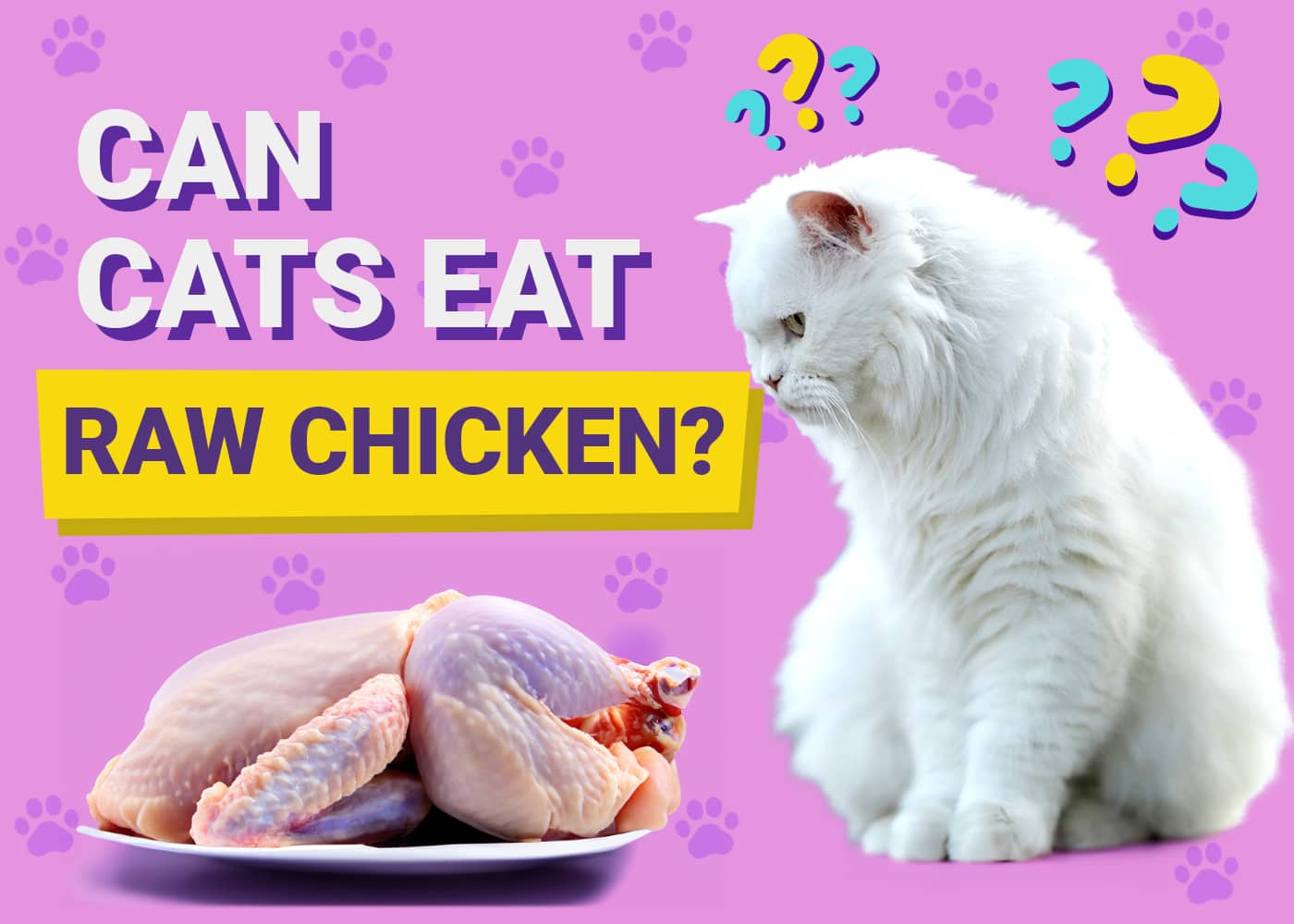VET APPROVED

The information is current and up-to-date in accordance with the latest veterinarian research.
Learn more »Click to Skip Ahead
Lettuce is a popular food to make salads, and since guinea pigs eat several vegetables, it’s not unusual to wonder if you can feed some to your pet. The short answer is yes. Your pet will be fine if it eats a small amount, but there are several things to consider before you make it a regular part of their diet. For one thing, there are several types of lettuce, and each has different nutrients. If you are interested in what types of lettuce your guinea pig can eat, keep reading while we look at each kind to see how much and how often you can provide them.

Iceberg Lettuce
Most experts consider iceberg lettuce the worst kind because it has a very low nutrient content. Iceberg lettuce contains trace amounts of calcium, potassium, and phosphorus, and little else. It’s mostly water, and if your pet eats too much, it could cause diarrhea. However, it’s not toxic, and your pet will be fine if it eats some.
Romaine Lettuce
Unlike iceberg, romaine lettuce contains many nutrients that are helpful to your guinea pig’s health. It provides plenty of vitamins A, C, and K, which will help boost the immune system and aid blood clotting. It also contains potassium which helps regulate muscle and nerve function. There is a significant amount of water that could cause diarrhea and a small amount of calcium, but your pet should be able to eat a small portion of romaine lettuce every few days.
Green Leaf Lettuce
Green leaf lettuce is somewhere between iceberg and romaine nutritionally. It has more vitamin C than many other types, which will help boost the immune system and keep your pet healthy, but it also has a lot of calcium that can lead to health problems in some pets. Green leaf lettuce is beneficial to add to the diet several times a week if you are not providing another high-calcium food like parsley, kale, or spinach in the same meal.
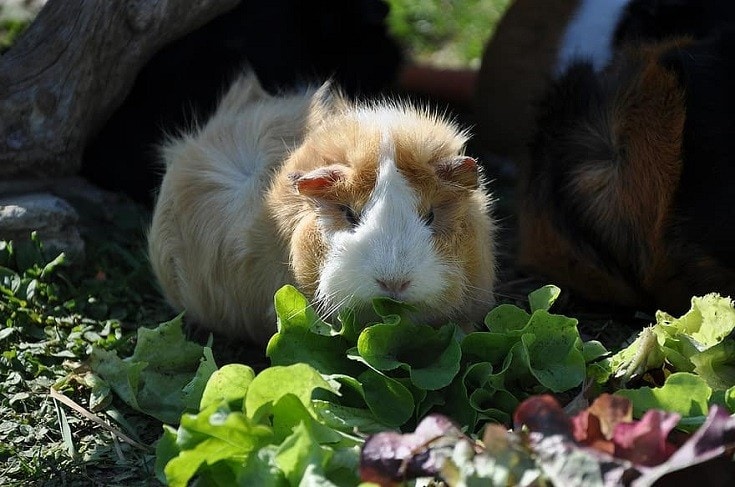
Red Leaf Lettuce
Red leaf lettuce has less calcium than romaine and green leaf lettuce, so it’s a good choice for serving multiple times per week. It has plenty of vitamins A and K that will help with your pet’s eyesight and blood clotting. It also has plenty of potassium, and the red color allows you to make more attractive salads that can help encourage your pet to eat more.
Butterhead Lettuce
Butterhead lettuce might also go by the name Boston lettuce, and this is another variety that is not harmful to your pet, but it’s not as good as some of the other types. It has a little more calcium, so you will want to space it out and limit it to no more than once or twice a week. There is not as much vitamin C, but there are plenty of vitamins A and K and potassium to help keep your pet healthy.
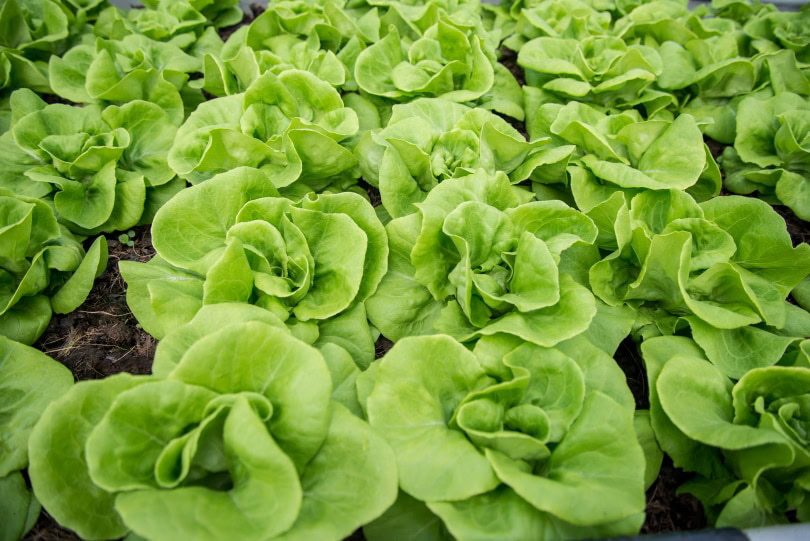
Tango Lettuce
Tango lettuce, AKA curly-leaf lettuce, with its frilly, bright green leaves and tender texture, is a safe and enjoyable leafy green to offer your guinea pig in moderation. It contains beneficial nutrients like vitamins A and K to support vision, immune function, and healthy blood clotting, along with a small amount of potassium for muscle and nerve support. However, like many lettuce varieties, Tango lettuce is low in vitamin C, so it shouldn’t be relied on as a primary source of nutrition. Offering it once or twice a week as part of a varied rotation of greens can provide enrichment and dietary diversity, especially when balanced with more nutrient-dense vegetables such as bell peppers or cilantro. As always, introduce it slowly and watch for any signs of digestive upset.

Tips for Feeding
- Always make sure you wash the lettuce well before serving it. The large surface area of lettuce allows it to hold many pesticides, which can be especially harmful to your guinea pig due to their small body size.
- You can serve the lettuce in whole leaves as a snack or cut into 1-inch squares and served as part of a salad.
- Always serve lettuce raw as cooking it can remove the nutrients.
- Guinea pigs can eat lettuce in moderation. While not toxic, its high water content can cause digestive problems if overfed.
- A diet high in calcium can lead to the formation of bladder stones in your guinea pig.
- Guinea pigs require vitamin C to stay healthy, so it’s better to choose varieties that contain more of this important nutrient.
- Keep in mind that romaine and green leaf lettuce are varieties with a lower calcium and higher vitamin C content.
- You can feed your guinea pig red leaf and butterhead lettuce two to four times a week because while it’s still nutritious, it contains more calcium and less vitamin C than the top varieties.
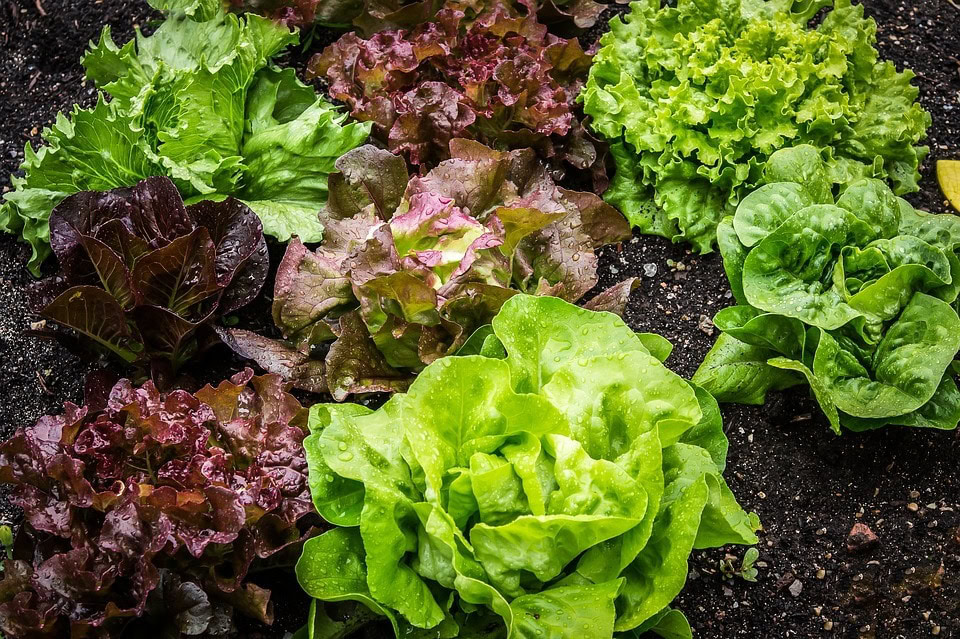

Conclusion
We hope you have enjoyed reading our look into the safety of feeding the different types of lettuce to your pet and have learned a little more about them. Romaine and green leaf lettuce are easy to find in most grocery stores, and they provide a relatively inexpensive way to feed your pet a healthy diet. Feeding these lettuces several times a week in rotation with other vitamin C-rich vegetables, such as bell peppers or cilantro, helps provide variety while minimizing the risk of urinary issues caused by excess calcium. Remember that variety, moderation, and balance are key to maintaining your guinea pig’s long-term health.
Find out more about food safety for your guinea pig:




